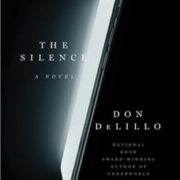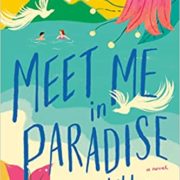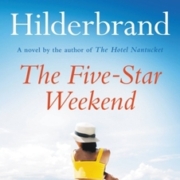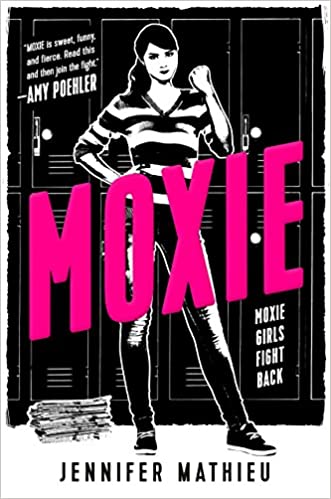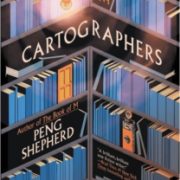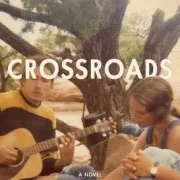The Starless Crown by James Rollins
James Rollins has a bit of a reputation. The dude’s been writing action-adventure novels since the late 90’s–some of which you might have even heard of (think, Subterranean or the novel adaptation of Indiana Jones and the Kingdom of the Crystal Skull). His Sigma Force series establishes him as a bonafide “master of the [thriller] genre” (according to BOOKLIST). Labeled by many as Michael Crichton’s “heir apparent” to the techno-thriller throne, Rollins has made quite the career of writing science-based, suspense-laden tales of mystery and reveal. Yet, thine truth easily forgotten is the tale of how this thriller-king forged his path into the literary realm (note: that was a bit of foreshadowing, not just an awkwardly phrased, archaic rhetoric of sorts). About a year before Subterranean hit the presses, Rollins published his first novel, Wit’ch Fire, under the pen name, James Clemens (which adds another layer of interest and mystery, as Rollins is a pseudonym as well). This was the first of a series, The Banned and the Banished. Now if the suspense is killing you (ba-dum-ching), I’ll go ahead and make the big reveal. Rollins got his start writing fantasy. (Well, he actually got his start by being a successful veterinarian, but that’s a whole other lead-in that we don’t have time for.)
In his latest entry, The Starless Crown, James Rollins introduces his readers to the fantastical planet of Urth (go ahead, pronounce it the same way you do your own planet). Set between the uninhabitable polars of a frozen tundra and a fiery desert is “the crown”–a land filled with all of the political, religious, and academic tropes a die-hard fantasy reader yearns for (myself included). To put it another way, there’s a school. Governing authorities are pulling most of the strings that are connected to this school (or at least, they think they are, due to the inclinations of a wise head master of sorts). Within the curriculum taught at the school, there’s a heavy emphasis on the merging of myth and science–as if the two are connected somehow. All of this mystery and apparent-string pulling sets the stage for our primary protagonist, Nyx.
Nyx is interesting. She’s almost blind (a cloudy haze covers both eyes, making it nearly impossible for her to see most objects). She’s a sharp, bright student that is advancing through the ranks of her school, which is hard to do as each new rank is preceded by a culling of sorts (don’t worry, it’s not the type of culling that leads to death, just the kind that says “get out of here, we don’t want you anymore”). Yet, as she advances, so does the mystery surrounding her. You see, her classmates are mostly made up of the high-born populace (i.e., those with enough money and status to use hyphenated words on the regular). Nyx, however, was raised by her adoptive father and his two sons, who happen to live in a swamp. Even in the crown, high-borns look down upon swamp-borns (we totally just made “swamp-borns” a thing). Here’s the kicker, though: Nyx wasn’t actually born in the swamp. Until the events of this story begin to unfold, nobody–not even Nyx or her adoptive family–knows where she came from. As her da’ (adoptive father) tells it, “it’s as if she just fell from the sky.”
See. This is fantasy 101. Rollins knows what he’s doing.
To whet your appetite just a bit, allow me to set the stage. I don’t want to spoil anything for you, thus the “just a bit” phrasing.
You already know about Nyx. Again, she’s interesting, but it’s the “absolutely great” type of interesting. She’s a very likable character. Paired with Nyx is her friend and Cloistery assigned “tutor”, Jace. Now, “Cloistery” is the name of the school mentioned above. Naturally, Nyx attends this school and Jace used to (before he was non-lethally culled from it). Jace is Nyx’s tutor in that he helps her read and get around, due to her visual impairment–he is not a formal tutor, as Nyx is more than capable of managing her own academic pursuits. Eventually, the pair escape the confines of the Cloistery, not because they don’t like it, but because of a series of events that leads to (a) Nyx regaining her eyesight, which in turn leads to (b) her discovery of a secret connection with a monstrous race of giant, winged, bat-like creatures, thus leading to (c) her receiving a vision (from the bats–or, Myr bats as they’re referred to) that foretells the damnation and destruction of Urth.
Now, here’s the cool bit. Every aspect of the story I’ve mentioned thus far is all about Nyx and her backstory. Yet, as her story continues to develop, so does the character count. Specifically, the primary character count. In addition to Nyx, Rollins sprinkles in three other main characters, each having a supporting character or two (i.e., each having a “Jace” or two). This allows for Rollins to employ a multi-perspective narrative, as each section of the book is told via the perspective of a different main character than the last section was. Not all readers enjoy this style. So be forewarned if that’s you.
Alongside Nyx and Jace, readers discover a variety of character profiles. Not far into the story, Rollins introduces Rhaif, a thief who breaks out of a prison-mine after finding (and stealing) an ancient artifact that might just be my favorite character of the entire book (yes, I just called an artifact a character–that’s the only spoiler you’re getting here). Next, Rollins introduces Kanthe, a dejected, displaced prince of the realm, due to him being born mere minutes after his older twin brother, and the fact that his father–King Toranth of Azantiia–is flat out jerkish. Kanthe and his tutor, a powerful alchemist named Frell, are thrown into Nyx’s story by either mere happenstance or fate–the latter of which seems improbable to Kanthe, as his sense of self-worth is, at best, lacking. The final character that makes up Rollins’ alliance of vagabonds is a disgraced warrior, who after years of banishment due to a crime of passion, finds himself re-entering a land he swore to never come back to, whilst re-entering a story he thought concluded–Nyx’s (okay, that’s for real the last spoiler).
So, to recap. This story is about a child of destiny protected by a group of outcasts–a prince trying to discover who he is, a thief with more scruples than he’d care to admit, and a legendary warrior wrestling with the demons of his past–in order to avoid (or set into motion) the end of the world. Again, fantasy 101. Throw in some magic, other-worldly creatures, and a villain we all want to punch in the face (even those of us who don’t actually know how to punch people in the face), and this story quickly becomes a satisfying entry to an already full genre.
This book reads like a Robin Hobbs, Terry Brooks, or Mark Lawrence piece–concise, clear vision, and excellent word choice. So, if you like these writers, this might be the book for you. While Rollins’ world building is solid, it’s not quite on par with Robert Jordan or Brandon Sanderson–which might be a good thing, since as of now this is planned as the first of four books (i.e., it takes a few more books than that to build the types of worlds Jordan and Sanderson have created). Rollins’ prose and pacing remind me of George R. R. Martin and R. F. Kuang, as this book builds steadily, while giving a lot of attention and detail to action sequences and dialogue more so than other facets of character development.
By and large, this is a great re-entry for Rollins. One can tell that he’s familiar with the genre, and that he’s more than capable of producing quality content that will keep his readers coming back for more. If you’re a fan of fantasy or even just a fan of Rollins’ other works, this might be right up your alley. If you’re looking to get into the fantasy genre, this is a great entry point. You can pick up a copy to borrow at the Joplin Public Library. It can be found in the new fiction section as you enter the lobby.

